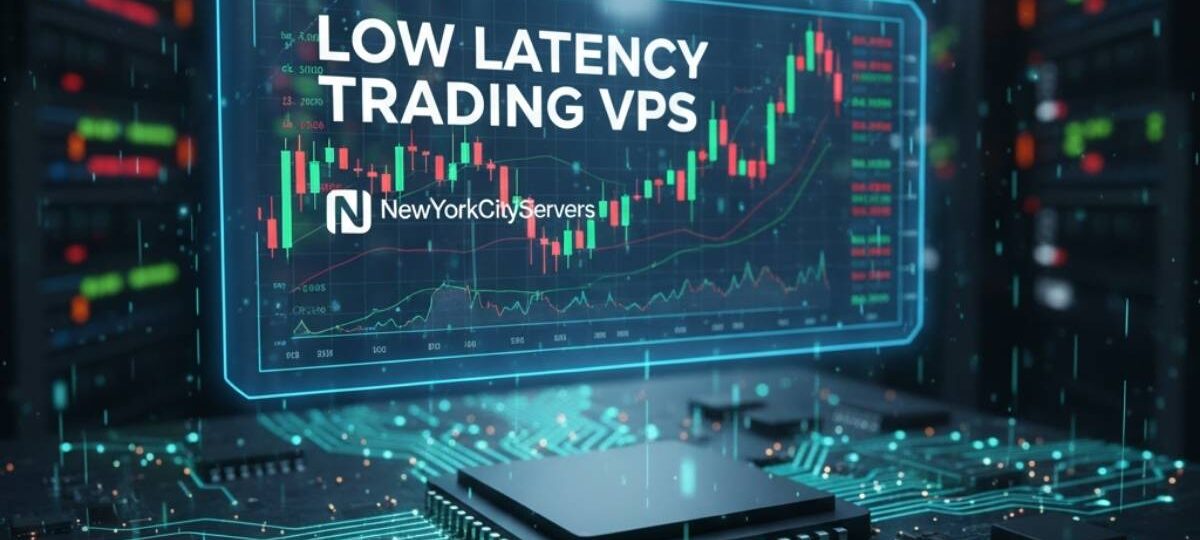In the midst of acute market volatility—remember the flash rallies triggered by recent geopolitical news—many traders found their Expert Advisors lagging behind, missing crucial trade executions by fractions of seconds that translated into lost profits. This delay is not just a misconfigured EA but frequently a failure of infrastructure to deliver genuinely low latency. Understanding how to identify and leverage a true low latency trading VPS is vital for traders who rely on speed to protect their gains and minimize slippage.
Choosing a low latency trading VPS involves much more than chasing the smallest ping numbers or cheapest cloud packages. True low latency is an orchestration of hardware, network topology, software configuration, and intelligent routing—factors that providers like NewYorkCityServers specialize in optimizing for forex traders.
Why Latency Is More Than Just Speed
Latency, in practical terms, reflects the total time it takes for a trade order to travel from your algorithm to the broker’s server and receive confirmation. However, raw ping measurements often mislead traders. ICMP ping packets behave differently from the TCP packets that carry trade data; as a result, a low ping to an IP address rarely guarantees low execution latency.
Real-world latency is affected by network jitter, congestion, and packet loss. During times of elevated trading activity, such as the London open or major news releases, even millisecond spike increases can mean execution delays doubling or tripling. Providers like NewYorkCityServers tackle this by maintaining multiple private peering agreements with major brokers, reducing hops and unpredictable network paths.
The Hardware Foundation: What Makes a VPS Truly Low Latency
Forex EAs demand continuous data processing and swift execution. The underlying VPS hardware affects this profoundly. Modern processors with high single-threaded performance reduce calculation bottlenecks, and NVMe SSDs expedite access to cached historical data and indicators. Simply increasing CPU counts or RAM does not necessarily reduce latency; optimization depends on balancing resource allocation efficiently.
NewYorkCityServers utilizes the latest Intel Xeon CPUs and enterprise-level SSDs with fine-tuned virtualization overhead to ensure the operating system prioritizes MT4 and MT5 processes. This approach prevents “noisy neighbor” performance degradation commonly encountered on generic shared VPS platforms.
The Critical Role of Network Routing and Data Center Proximity
Latency increases exponentially with each network hop between your VPS and broker’s data center. Physical proximity helps, but so does smart routing. Selecting a VPS located near your broker’s infrastructure is the first step; leveraging providers with carrier-neutral data centers and diverse peering arrangements can shave precious milliseconds off your round-trip time.

For example, NewYorkCityServers maintains nodes in major forex hubs, including London and New York, with redundant fiber paths. This setup dramatically reduces the probability of spikes due to congested routes and creates fallback options they automatically switch to without interrupting your trading operations.
Why Dedicated Resources Matter for Consistent Low Latency
Shared VPS environments might appear cost-effective but can induce unpredictable spikes when other tenants overwhelm the server during peak usage. This variability alone introduces latency noise that can disrupt finely tuned strategies.
Providers like NewYorkCityServers offer dedicated or near-dedicated CPU and RAM allocations, ensuring your trading platform’s demand is met consistently. This is crucial for maintenance-free, 24/7 automated trading where timing precision cannot be compromised.
Software and OS-Level Optimizations Supporting Low Latency
A VPS hosting MT4 or MT5 is only as fast as the operating system and network stack allow. Standard OS configurations include features that optimize for general-purpose workloads but may add latency in real-time packet processing.
Top-tier providers work on reducing kernel latency, increasing TCP stack efficiency, and tuning interrupt handling to prioritize trading platform processes. These tailored tweaks cut latency spikes and improve jitter stability—a subtle advantage that often goes unnoticed until lost trades highlight its absence.
Real-Life Impact on Scalping and High-Frequency Trading
Scalpers and high-frequency traders depend most intensely on low latency trading VPS infrastructure. Under simulated load tests, EAs executed on optimized low latency VPSs like those provided by NewYorkCityServers registered 30% faster average order execution and half the variance in latency compared to generic cloud servers.
In real market conditions, this translates into narrower spreads achievable to scalpers, higher success rates on quick-in, quick-out trades, and improved risk management due to consistent order execution predictability.
Infrastructure Monitoring: Your First Line of Defense
The best providers don’t stop at offering optimized hardware and network design—they also provide continuous monitoring of key VPS health indicators, network latency trends, and broker connection stability. Proactive detection and alerting of latency spikes reduce downtime and execution disruption risk for traders.
NewYorkCityServers integrates these monitoring tools with 24/7 support teams capable of rapid diagnostics and remediation, creating a feedback loop that keeps your VPS environment finely tuned for your trading rhythm.
Balancing Cost With Performance in Low Latency Environments
While low latency VPS options typically command premium pricing versus consumer cloud services, the improved execution speed and consistency often more than compensate through reduced slippage and missed opportunities.
Traders evaluating VPS providers should quantify the trade-off by analyzing execution delay statistics under live conditions and comparing them with expected gains or losses in their specific strategies. Providers like NewYorkCityServers offer scalable services matching different trader profiles—from micro scalpers to swing traders—allowing alignment of performance needs with budget.
Final Thoughts: Building a Trading Infrastructure That Works When It Counts
Achieving genuinely low latency in forex trading is a multifaceted engineering challenge. It requires more than just “fast” servers; it demands a systemic approach blending cutting-edge hardware, intelligent network engineering, software optimization, and vigilant operational monitoring.
Providers like NewYorkCityServers demonstrate how this comprehensive approach translates into real trading advantages—helping traders keep edge in fast-moving markets where every millisecond counts.
For traders aiming to protect their gains and execute strategies reliably under all market conditions, investing in a properly architected low latency trading VPS is not an expense but a critical component of success.
See Also: Forex Trading – Now Anyone Can Do It










